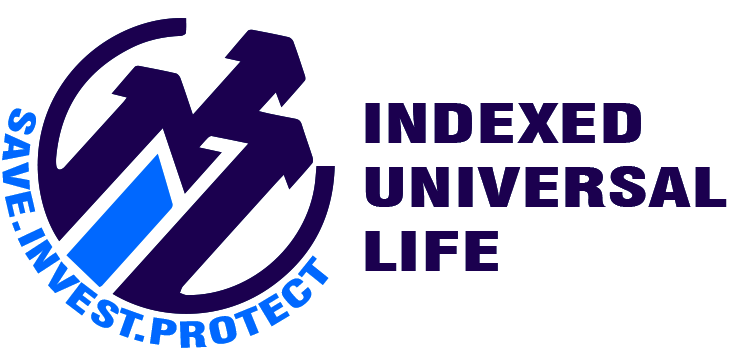The IUL conundrum: big sales and big problems
By John Hilton
Last Updated: Sep 1, 2024
Indexed universal life is a lot of things, depending on who you are talking to.
To many consumers, IUL is a multipurpose product that helps them accomplish a lot of different financial goals. For some lawyers, it is a seemingly endless source of business as lawsuits proliferate.
Consumer advocates say IUL is confusing to almost all who buy it and a product
rife with rampant fraud. Regulators find IUL a persistent headache.
One thing that nobody will argue is that IUL sells — and sells big. While other life insurance product lines lag with low-single-digit growth or negative sales numbers, IUL face amount increased 11% in the first quarter and the number of policies sold increased 13%, LIMRA reported.
“Many clients appreciate that an indexed universal life policy offers a zero-
floor guarantee,” said Raza Begg, an executive director at Experior Financial Group in Cheektowaga, N.Y. “This guarantee means that the policy is guaranteed never to lose or incur losses based on market indices, providing a level of safety that attracts risk-averse investors.”
The versatility attraction and the powerful sales ensure that IUL is not going away in the near term. But is change needed to help IUL evolve into a more responsible life insurance product? Many insurance people say yes and point to illustrations and consumer education as areas that are lacking.
IUL critics have “some valid points,” Begg concedes, noting that IUL is a fairly new product to many.pes of retirement plans.
“Unfortunately, consumers usually do not understand an IUL,” he added. “The lack of exposure and the limited number of agents with access to this type of policy are the main reasons many have not heard of this tool.”
Popular product
Transamerica offered the first IUL product in 1997. Today, more than 40 companies are offering some type of IUL policy, with more companies with new IUL products and features hitting the market each year.
Like indexed annuity products, IUL traces its popularity to the safe, middle ground it stakes out between market growth and risk. IUL provides policyholders with permanent life insurance along with a cash value component and a death benefit.
The money in a policyholder’s cash value account can earn interest by tracking a stock market index selected by the insurer, such as the Standard & Poor’s 500. That interest rate can fluctuate, but losses are limited and gains often are capped.
Options allow the holder to buy or sell the underlying index at a specific time for a set price, which can rise or fall quickly. If an option is exercised at the right time, the yield can be significant. But if the option expires and the timing is never right, the entire investment in that option is lost.
“IUL is one of the few instruments that allows you to access up to 90% of your death benefits while still alive in case of a health issue,” Begg explained. “This access gives the policy owner more control over how their savings should be utilized, as a death benefit or a retirement vehicle.”
IUL is generally considered to be more volatile than fixed universal life policies but less risky than variable UL, since IUL does not invest in equity positions.
But management fees associated with the options budget make IUL a costlier option in many cases. And the options aspect is one of the reasons critics say IUL is too complex for average Americans.
Rising premiums an issue
Internal costs can cause an IUL account’s value to drop substantially. That puts a policy at risk of lapsing, and the policyholder is on the hook for higher premiums just to keep the policy intact. Sometimes significantly higher premiums.
IUL is often part of complex premium financing deals with large amounts of money at stake. Several of these deals have gone bad and led to lawsuits.
In an Oklahoma case, Tom D. Le and Trang H. Nguyen purchased a $15 million indexed life policy for the premium payment of $2 million. The plan called for the first 10 years of policy premiums to be paid for through a drawdown on a bank loan.
Plaintiffs claimed they were told there would be no more premiums due under the policy after year 10. They would still make yearly interest payments only on the bank loan until year 15. The Nguyens would end up with a fully paid-up $15 million policy for only the payment of the yearly interest on the bank loan, court documents say.
A PacLife illustration was used to show plaintiffs that the cash value of the policy would be $2.8 million in year 15, the lawsuit said, while the Arvest loan balance used to pay the premiums would be $2.25 million.
The Nguyens claimed they later learned that premium payments would be required for the life of the policy, or 84 years, court documents say. Their case was settled in June with no terms disclosed.
Speaking generally, Begg concedes that fees are high in the initial years of an IUL policy. But those expenses should be compared to a 401(k) plan, he added.
“You will know upfront what the total expense will be in an IUL, unlike in a 401(k) where there are no fixed expenses,” he said.
But seasoned financial advisors generally agree that IUL is a complicated product for the average American to fully grasp.
IUL can be “a very complicated product,” said Steve Azoury, owner of Azoury Financial in Troy, Mich. “Consumers may not understand the costs of the death benefit. They may also be unaware of the different crediting strategies on the potential gains. Finally, consumers could be confused by the potential of policy lapse if expectations are not met.”
Illustrations a lingering issue
Attorney Robert Rikard, half of the Rikard & Protopapas law firm in Columbia, S.C., has three IUL cases in South Carolina state court. He is hopeful that all will go to trial by the end of the year, providing some resolution for clients who regret signing up for a big-dollar IUL product.
Rikard, who has other IUL cases in other states, said the product is too often being sold as the basis for a retirement plan.
Most of the questionable IUL strategies involve policy loans and/or inflated illustrations, often both. Rikard has experts who testify to the recklessness of the plans.
“Experts that have worked for me who have either sold these products or looked at these products say it really is just a small sliver of the public that should be sold an IUL product,” he said. “Agents have to be educated better on the fact that if you’re going to recommend an IUL, it has to be a small slice of a much-larger, well-allocated asset portfolio. The IUL cannot be 100% of a client’s life savings.”
IUL sales are sealed with illustrations, and efforts continue to clean up the practice. The combination of agents who often don’t fully understand the product and an unrealistic illustration is frustrating regulators and consumer advocates alike.
Actuarial Guideline 49 was adopted in 2015 to address IUL products created after the original 1997 illustration model was adopted. Insurers quickly got around it by offering IUL products with multipliers and bonuses.
That led to AG 49-A in 2020 and eventually AG 49-B. Regulators referred to the latter update as “a quick fix” when it was adopted in 2023. Regulators have repeatedly shied away from an overall illustrations rule rewrite.
“These products are just incredibly complex,” Rikard said. “When you get into the weeds with these agents, they really don’t understand how these products work. They’re simply relying on the illustration to sell the product, and the illustration is the best-case scenario if every single thing in that illustration works correctly.”

InsuranceNewsNet Senior Editor John Hilton has covered business and other beats in more than 20 years of daily journalism. John may be reached at john.hilton@innfeedback.com. Follow him on Twitter @INNJohnH.






